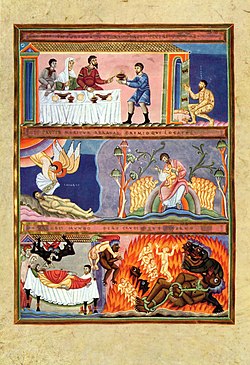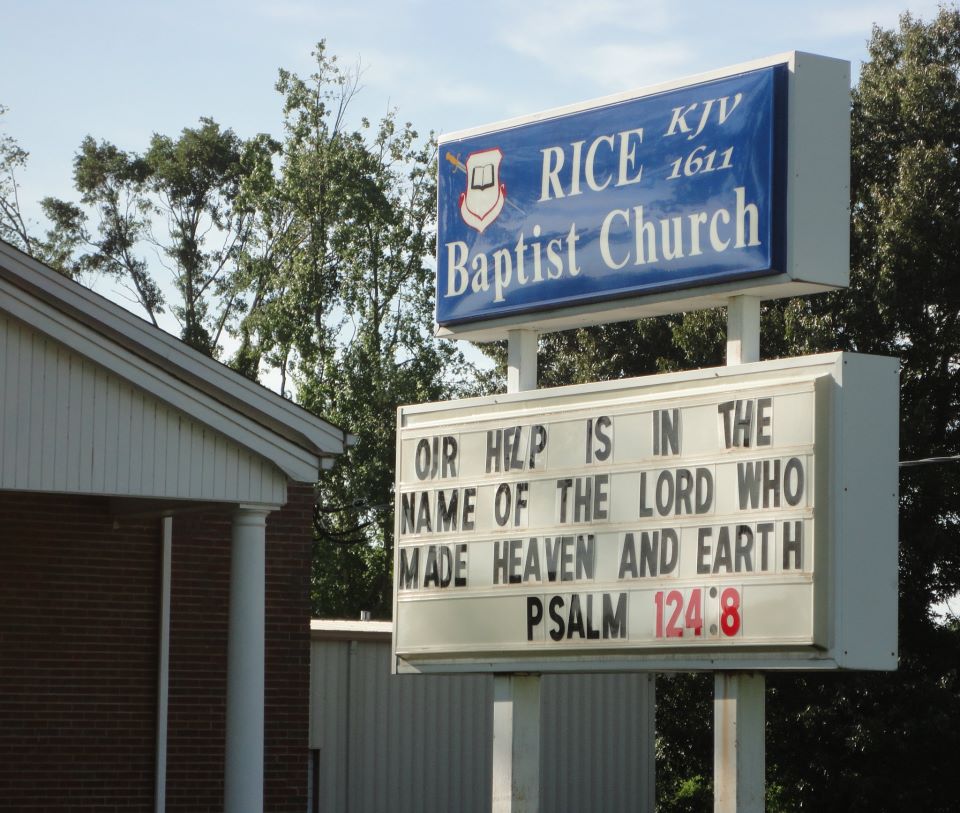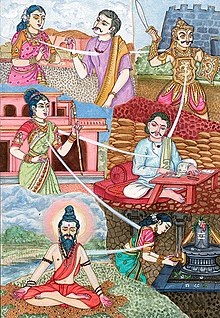
By Spencer D Gear PhD
1. Does baptism bring eternal salvation?
It seems as though this issue is clear – people need to be baptised to receive salvation. The Scriptures state that: “Baptism that now saves you….” (I Peter 3:21 NIV) and Jesus states, “Whoever believes and is baptized will be saved” (Mark 16:16 NIV).
This sounds clear enough, doesn’t it? In fact, I was interacting with Andy (not his real name) on a theological bulletin board. He stated: “Recent theology cannot make the truth of 1 Peter 3:21 go away – Baptism now saves you. This is a great and precious promise. Christians throughout all ages have found great comfort in that fact that their salvation did not rest on them, but on God who had chosen them through baptism. I do believe in baptismal regeneration and in infant baptism.”[1]
Baptismal regeneration is the theology that states “that baptism is necessary for salvation.” This view is supported by “Roman Catholic teaching…. Although there are different nuances in their teaching, such a position is held by many Episcopalians, many Lutherans, and by the Churches of Christ”(Grudem 1999, n10, p. 384).
 Does 1 Peter 3:21 (NIV) teach baptism as a necessity for salvation, i.e. baptismal regeneration? The verse states: “And this water symbolizes baptism that now saves you also–not the removal of dirt from the body but the pledge[2] of a good conscience toward God. It saves you by the resurrection of Jesus Christ”.
Does 1 Peter 3:21 (NIV) teach baptism as a necessity for salvation, i.e. baptismal regeneration? The verse states: “And this water symbolizes baptism that now saves you also–not the removal of dirt from the body but the pledge[2] of a good conscience toward God. It saves you by the resurrection of Jesus Christ”.
The ESV reads: “Baptism, which corresponds to this, now saves you, not as a removal of dirt from the body but as an appeal to God for a good conscience, through the resurrection of Jesus Christ.”
Mark 16:16 (NIV) states, as the words of Jesus, “Whoever believes and is baptized will be saved, but whoever does not believe will be condemned”.
Let me say up front that I Peter 3:21 (NIV) is a difficult verse to interpret because of the content of the context (1 Pet 3:18-22 NIV):
· It is a challenge to know exactly what Peter is saying in connecting “save” with the waters of Noah’s flood;
· Elsewhere in the Scripture we know that salvation is by faith alone through Christ alone (Acts 4:12 NIV; Eph 2:8-9 NIV);
· In other places, the Bible teaches salvation and repentance prior to baptism (Romans 3:22, 24, 25, 26, 28, 30; 4:5; Galatians 2:16; Ephesians 2:8-9; Philippians 3:9);
· Some verses used to support baptismal regeneration have better explanations.
2. Mark 16:16 does not teach baptismal regeneration
This verse is fairly easily dealt with on two counts:
 Mark 16:9-20, the long ending of Mark, is not included in the earliest manuscripts of the New Testament, so I am confident in not including it as part of the canon of Scripture. Mark 16:16 was a teaching that crept into the early church, but it is not original to Mark. See the explanations by Bruce Metzger (1964/1968/1992, pp. 227-228) and Walter W. Wessel (1984, pp. 792-793) in Appendix I.
Mark 16:9-20, the long ending of Mark, is not included in the earliest manuscripts of the New Testament, so I am confident in not including it as part of the canon of Scripture. Mark 16:16 was a teaching that crept into the early church, but it is not original to Mark. See the explanations by Bruce Metzger (1964/1968/1992, pp. 227-228) and Walter W. Wessel (1984, pp. 792-793) in Appendix I.
![clip_image001[1] clip_image001[1]](https://i0.wp.com/truthchallenge.one/wp-content/uploads/2019/11/clip_image0011_thumb.gif?resize=50%2C50&ssl=1) Mark 16:16 states that “Whoever believes and is baptized will be saved, but whoever does not believe will be condemned.” There is nothing in this statement about those who believe and are not baptised. In fact, this we do know that Jesus said to the dying thief on the cross, who did not have an opportunity to be baptised: “I tell you the truth, today you will be with me in paradise” (Luke 23:43). “It is simply absence of belief, not of baptism, which is correlated with condemnation” (Erickson 1985, p. 1098). Grudem (1999) contends that
Mark 16:16 states that “Whoever believes and is baptized will be saved, but whoever does not believe will be condemned.” There is nothing in this statement about those who believe and are not baptised. In fact, this we do know that Jesus said to the dying thief on the cross, who did not have an opportunity to be baptised: “I tell you the truth, today you will be with me in paradise” (Luke 23:43). “It is simply absence of belief, not of baptism, which is correlated with condemnation” (Erickson 1985, p. 1098). Grudem (1999) contends that
it is doubtful whether this verse [Mark 16:16] should be used in support of a theological position at all, since there are many manuscripts that do not have this verse (or Mark 16:9-20), and it seems most likely that this verse was not in the gospel as Mark originally wrote it (n11, p. 384).
We also know that a Christian’s justification by faith, when he/she is declared righteous before God, happens at the point of faith in Christ and not at the time of baptism (see Rom. 3:20, 26, 28; 5:1; 8:30; 10:4, 10; Gal. 2:16; 3:24).
We’ll get to 1 Peter 3:21 shortly, but it is important to note that
3. The Bible teaches belief BEFORE baptism
We see belief or trust in Christ prior to baptism in passages such as the following:
 Those who were baptised must be able to be discipled and taught to be obedient to Christ’s commands (Matt. 28:19-20 ESV).
Those who were baptised must be able to be discipled and taught to be obedient to Christ’s commands (Matt. 28:19-20 ESV).
 One of the most profound examples is the thief on the cross. In Luke 23:42-43 (ESV) we read of the thief asking Jesus, “Jesus, remember me when you come into your kingdom.” Jesus’ response was: “I tell you the truth, today you will be with me in paradise.” Obviously baptism was not compulsory for a person to enter into paradise.
One of the most profound examples is the thief on the cross. In Luke 23:42-43 (ESV) we read of the thief asking Jesus, “Jesus, remember me when you come into your kingdom.” Jesus’ response was: “I tell you the truth, today you will be with me in paradise.” Obviously baptism was not compulsory for a person to enter into paradise.
 Acts 2:38 (ESV) gives the apostolic command: “Peter replied, ‘Repent and be baptized, every one of you, in the name of Jesus Christ for the forgiveness of your sins. And you will receive the gift of the Holy Spirit.'”
Acts 2:38 (ESV) gives the apostolic command: “Peter replied, ‘Repent and be baptized, every one of you, in the name of Jesus Christ for the forgiveness of your sins. And you will receive the gift of the Holy Spirit.'”
 Acts 2:41 affirms that belief precedes baptism: “Those who accepted his message were baptized, and about three thousand were added to their number that day.”
Acts 2:41 affirms that belief precedes baptism: “Those who accepted his message were baptized, and about three thousand were added to their number that day.”
 In Acts 10:47-48, those who were baptised were those who had “received the Holy Spirit just as we have.” This is hardly the language to support baptism for an infant. It is the language of believers’ baptism.
In Acts 10:47-48, those who were baptised were those who had “received the Holy Spirit just as we have.” This is hardly the language to support baptism for an infant. It is the language of believers’ baptism.
Old Testament believers were saved without being baptised. Therefore, we should expect that salvation, without baptism, is seen in the New Testament.
Church historian, Earle E. Cairns, stated that for the early church, baptism was “an act of initiation into the Christian church [and] was usually performed at Easter or Pentecost…. Baptism was normally by immersion; on occasion affusion, or pouring, was practiced. [There was the debate over] infant baptism which Tertullian opposed and Cyprian supported….” (Cairns 1954/1981, p. 119).
It was Martin Luther who rediscovered that “the just shall live by faith” (Rom. 1:17 KJV) or, “The righteous will live by faith” (NIV), which is a quote from Hab. 2:4. This is affirmed by Rom. 4:4-5; Titus 3:5-7 and Acts 16:31. The Scriptures do not support the view that the just shall live by faith and baptism. It could not be stated any cleared in Eph. 2:8-9, “For it is by grace you have been saved, through faith–and this not from yourselves, it is the gift of God–not by works, so that no one can boast.”
4. Household baptisms
Sometimes the view is given that “I Corinthians 1:16; Acts 11:14, 16:15, 33, 18:8; these passages all refer to households being baptized. What an opponent of infant baptism must do is explain how they arrive at the conclusion that there were no infants or young children in these households. If infants were not intended to be baptized they would be excluded in the text, but we have no reason to believe that they are. In short there is nothing to exclude infants from baptism in the Bible.” This was Andy’s view when I interacted with him on a seminary bulletin board.[3]
Let’s examine these examples provided by Andy.
 “Household” baptism that was used by him to support infant baptism – 1 Cor. 1:16, which reads, “I did baptize also the household of Stephanas.” If we read that verse alone we could be led to think that this included infants and those who had not believed and these people could be members of households.
“Household” baptism that was used by him to support infant baptism – 1 Cor. 1:16, which reads, “I did baptize also the household of Stephanas.” If we read that verse alone we could be led to think that this included infants and those who had not believed and these people could be members of households.
However, this is clarified in 1 Cor. 16:15 where we read that “the household of Stephanas were the first converts in Achaia, and that they have devoted themselves to the service of the saints.” This verse clearly supports the opposite of infant baptism. They were Christian converts when they were baptised. They were not infants who were incapable of believing. They were converts to the Christian faith. Faith comes before baptism.
![clip_image013[1] clip_image013[1]](https://i0.wp.com/truthchallenge.one/wp-content/uploads/2019/11/clip_image0131_thumb.gif?resize=48%2C48&ssl=1) Acts 11:14 reads: “He [Peter] will bring you a message through which you and all your household will be saved.”
Acts 11:14 reads: “He [Peter] will bring you a message through which you and all your household will be saved.”
This is clear. The “message” will be brought through which the “household will be saved.” The baptism referred to is not water baptism but the baptism in the Holy Spirit (11:16).
![clip_image013[2] clip_image013[2]](https://i0.wp.com/truthchallenge.one/wp-content/uploads/2019/11/clip_image0132_thumb.gif?resize=48%2C48&ssl=1) Acts 16:15 records what happened with Lydia who was “a worshiper of God” and “the Lord opened her heart to pay attention to what was said by Paul” (16:14). Chapter 16:15 records, “When she and the members of her household were baptized, she invited us to her home.’ If you consider me a believer in the Lord,’ she said, ‘come and stay at my house.’ And she persuaded us.”
Acts 16:15 records what happened with Lydia who was “a worshiper of God” and “the Lord opened her heart to pay attention to what was said by Paul” (16:14). Chapter 16:15 records, “When she and the members of her household were baptized, she invited us to her home.’ If you consider me a believer in the Lord,’ she said, ‘come and stay at my house.’ And she persuaded us.”
It is clear here that Lydia was a believer (“the Lord opened her heart”) when she was baptised as she affirms, “If you consider me a believer in the Lord.” It is not stated directly here that the “household” believed, but the precedent is set elsewhere in the Scripture that “households” that were baptised had previously believed. This is also consistent with the New Testament principle that faith alone in Christ alone is what brings eternal salvation.
![clip_image013[3] clip_image013[3]](https://i0.wp.com/truthchallenge.one/wp-content/uploads/2019/11/clip_image0133_thumb.gif?resize=48%2C48&ssl=1) In Acts 18:8, we have another example of “household” baptism. This verse states that “Crispus, the synagogue ruler, and his entire household believed in the Lord; and many of the Corinthians who heard him believed and were baptized.”
In Acts 18:8, we have another example of “household” baptism. This verse states that “Crispus, the synagogue ruler, and his entire household believed in the Lord; and many of the Corinthians who heard him believed and were baptized.”
Again, baptism happens after belief in the Lord is experienced and this applies to believing “households.” Therefore, infant belief is not possible.
5. First Peter 3:21
This verse states, “And this water symbolizes baptism that now saves you also–not the removal of dirt from the body but the pledge[4] of a good conscience toward God. It saves you by the resurrection of Jesus Christ” (NIV).
Let me state upfront that this is a most difficult verse to interpret because of the analogy of Scripture which refutes what this verse seems to be saying on the surface, “baptism that now saves you also.” This is especially in light of Colossians 2:12 “…. having been buried with him in baptism and raised with him through your faith in the power of God, who raised him from the dead.” The key is “your faith in the power of God” and not through faith in water baptism. That’s what makes interpretation of 1 Peter 3:21 a challenging task.
Remember Andy’s words to me? “Baptism now saves you. This is a great and precious promise” and that Christians through the centuries have been comforted by the “God who had chosen them through baptism. I do believe in baptismal regeneration and in infant baptism.”[5]
What are the issues from this verse that seem, on the surface, to teach that “baptism now saves you”?
5.1 What is the context?
In vv. 18-19, the context is the death of Christ for sins, the “righteous for the unrighteous, to bring you to God” (v. 19), the resurrection (“made alive by the Spirit”, v. 18), and Noah, the ark, and eight people being saved through the flood (v. 20).
It is this flood that is used in some association with baptism.
5.2 What does it means that “water symbolizes baptism”?
The word translated, “symbolizes,” in the NIV is the Greek, antitypos. “Baptism is an antitype…. or counterpart of the type” (Blum 1981, p. 242). An antitype is ‘a person or thing that represents the opposite of someone or something else’ (Lexico/Oxford Dictionary 2019. s.v. antitype).There is some kind of resemblance between the waters of the flood and baptism. What is it? Baptism is a copy, representation or fulfillment of the Old Testament judgment that happened through the great flood.
 The text allows for a resemblance between the flood and baptism. That is, as the flood waters cleansed the earth of man’s wickedness, so the water of baptism indicates man’s cleansing from sin. As the flood separated Noah and his family from the wicked world of their day, so baptism separates believers from the evil world of our day. Baptism, then, is the counterpart of the flood (Kistemaker 1987, p. 147).
The text allows for a resemblance between the flood and baptism. That is, as the flood waters cleansed the earth of man’s wickedness, so the water of baptism indicates man’s cleansing from sin. As the flood separated Noah and his family from the wicked world of their day, so baptism separates believers from the evil world of our day. Baptism, then, is the counterpart of the flood (Kistemaker 1987, p. 147).
5.3 In what sense can baptism be understood as that which “saves you”?
Does baptism bring salvation to the person baptised? In what sense can “save” be used here? We know from both Old and New Testaments that sins can be washed away.
- Psalm 51:2, “Wash away all my iniquity and cleanse me from my sin.”
- Ezekiel 36:25, “I will sprinkle clean water on you, and you will be clean; I will cleanse you from all your impurities and from all your idols.”
- Ananias told the apostle Paul to “get up, be baptized and wash your sins away, calling on his name” (Acts 22:16).
- Titus 3:5, “He saved us, not because of righteous things we had done, but because of his mercy. He saved us through the washing of rebirth and renewal by the Holy Spirit.”
How can baptism save?
Baptism is a symbol for cleansing the believer from sin, but Scripture does not teach that baptismal water saves a person. Rather, a believer is saved because of Christ’s atoning death on the cross and his resurrection from the grave (Rom. 6:4). Baptism is a symbol of the shed blood of Christ that cleanses the believer from sin” (Kistemaker 1987, p. 148).
This becomes clear through the next statement that baptism is “not the removal of dirt from the body.” That’s an obvious analogy to reject. But baptism is “the pledge of a good conscience toward God.”
5.4 How is baptism related to “the pledge of a good conscience toward God” (NIV)?
There are two ways of understanding, “pledge,” subjective, as in the NIV, or objective, as in the ESV, “as an appeal to God for a good conscience.”
As in the NIV, the subjective meaning of “pledge” is that “we look at baptism from our point of view and express ourselves subjectively.” There is a majority of translators who prefer the subjective approach, where “pledge” means “response.”
“In short, the believer receives not only the sign of baptism with water; he also responds by ‘keeping a clear conscience’ (see v. 16)” (Kistemaker 1987, p. 148). This kind of translation is supported by the KJV, NKJV, RV, ASV, NEB, Phillips, GNB, JB, NAB and NIV. So, baptism is the proper response of somebody who is already related to God through faith.
The objective meaning is that of the believer making an “appeal to God for a good conscience.” By appealing to God to help us, “we see the importance of baptism objectively. Without God’s aid we are unable to make a pledge to serve him” (Kistemaker 1987, p. 148). This type of translation is supported by the RSV, NRSV, ESV, MLB, NASB, Moffatt and ISV.
In supporting the objective sense, Grudem (1994) interprets “but as an appeal to God for a clear conscience” to mean “an inward, spiritual transaction between God and the individual, a transaction symbolized by the outward ceremony of baptism.” Grudem states that
we could paraphrase Peter’s statement by saying, “Baptism now saves you—not the outward physical ceremony of baptism but the inward spiritual reality which baptism represents.” In this way, Peter guards against any view of baptism that would attribute automatic saving power to the physical ceremony itself (p. 974).
This seems the most satisfactory kind of explanation of a very difficult passage, to be in line with the scriptural emphasis of salvation through faith alone, trusting in Christ alone.
5.5 How can baptism that “saves you” be linked to “saves you by the resurrection of Jesus Christ”?
This further indicates that the baptism which “saves you” is associated with the “the resurrection of Jesus Christ.” Thus, it is an analogy of baptism, associating it with eternal salvation through Christ, through the resurrection of Christ. See verses such as 1 Cor. 15:3-4 and 1 Peter 1:3 for affirmations of the link between salvation and the death and resurrection of Christ.
6. What does Acts 22:16 mean?
The verse, being the words of Ananias, reads, “And now what are you waiting for? Get up, be baptized and wash your sins away, calling on his name.” This is a more extensive statement than that in Acts 9:16. However, according to Acts 9:17, the “scales fell from his eyes” (the equivalent of belief) before he was baptised (9:18).
So, does baptism “wash your sins away,” thus making belief unnecessary? Is this a verse in support of baptismal regeneration?
While Acts 22:16 refers to Paul’s baptism, the apostle clearly distinguished between the gospel and baptism: “For Christ did not send me to baptize, but to preach the gospel–not with words of human wisdom, lest the cross of Christ be emptied of its power” (1 Cor. 1:17).
It is the gospel that “is the power of God for the salvation of everyone who believes” (Rom. 1:17), so baptism cannot have a salvific effect. Paul’s experience from Acts 9:17-18 involved a spiritual experience before baptism, so to “be baptized and wash your sins away” (Acts 22:16) cannot refer to baptismal regeneration.
Norman Geisler rightly concludes that “baptism then, like confession, is not a condition for eternal life but a manifestation of it. Baptism is a work that flows from the faith that alone brings salvation through the gospel” (2004, p. 498).
7. Examples from Church History
An example from the early church fathers was Justin Martyr (ca. 100-165), who wrote: “As many as are persuaded and believe that what we teach and say is true,… are brought by us where there is water, and are regenerated [born-again] in the same manner in which we were ourselves regenerated” (Schaff, n.d., First Apology, Chapter LXI).
The regenerated were baptised according to Justin Martyr in the second century.
Professor of Church History & Historical Theology, Geoffrey W. Bromiley, summarised the biblical and historical evidence:
The patristic statements linking infant baptism with the apostles are fragmentary and unconvincing in the earlier stages…. Examples of believers’ baptism are common in the first centuries, and a continuing, if suppressed, witness has always been borne to this requirement…. The development of infant baptism seems to be linked with the incursion of pagan notions and practices. Finally, there is evidence of greater evangelistic incisiveness and evangelical purity of doctrine where [believers’ baptism] is recognized to be the baptism of the NT (Bromiley 1984, p. 116).
The facts are: The Bible (including the Apostles) and the Church established in the New Testament practised believers’ baptism. Why the change to paedobaptism?
This is not the place for a comprehensive documentation and assessment of the baptismal practices throughout church history. However, this we can note:
During the fifth century the towering figure of Augustine of Hippo with his powerful reassertion of the doctrine of original guilt settled the issue for a thousand years. Paedobaptism became the norm, and as by then the great expansion of the church among adults had run its course, adult baptism became increasingly rare and almost unknown. With the decline of adult baptism went, too, the decline of the catechumenate, as instruction before baptism was replaced, of necessity, with instruction after baptism. Yet that instruction became increasingly strange to modern ears. For although baptized infants grew up believing that their baptism had brought them forgiveness, eternal life, membership of the church and entry into the family of God, their position in that family became increasingly insecure. In time, a vast system of priests, penances and pilgrimages was needed to preserve their spiritual lives, while even after the intercession of saints, the assistance of Mary, the prayers of the church and the indulgences of the pope, centuries in purgatory still awaited them after death before their souls were cleansed from sin and prepared for heaven” (Bridge & Phypers 1977, pp. 82-83).
8. Appendix I
8.1 Bruce Metzger
Bruce Metzger, who has had a long and distinguished career in the discipline of textual criticism, which attempts “to determine the original text of the biblical books” (Erickson 1985, p. 83), states that:
The long ending [of Mark 16:9-20] in an expanded form existed, so Jerome tells us, in Greek copies current in his day, and since the discovery of W earlier this [20th] century we now have the Greek text of this expansion….
None of these four endings commends itself as original. The obvious and pervasive apocryphal flavour of the expansion [i.e. the long ending]…, as well as the extremely limited basis of evidence supporting it, condemns it as a totally secondary accretion.
The long ending [i.e. Mark 16:9-20, as in the Textus Receptus and, therefore, translated in the King James Version of the Bible], though present in a variety of witnesses, some of them ancient, must also be judged by internal evidence to be secondary. For example, the presence of seventeen non-Marcan words or words used in a non-Marcan sense; the lack of a smooth juncture between verses 8 and 9 (the subject in vs. 9 is the women, whereas Jesus is the presumed subject in vs. 9); and the way in which Mary is identified in verse 9 even though she has been mentioned previously (vs. 1) – all these features indicate that the section was added by someone who knew a form of Mark which ended abruptly with verse 8 and who wished to provide a more appropriate conclusion. An Armenian manuscript of the Gospels, copied A.D. 989 (see Plate XIVb) contains a brief rubic of two words in the space at the end of the lat line of verse 8 and before the last twelve verses, namely Ariston eritsou (‘of the Presbyter Ariston’). Many have interpreted this as a reference to Ariston, a contemporary of Papias in the early second century and traditionally a disciple of John the Apostle. But the probability that an Armenian rubricator [manuscript maker] would have access to historically valuable tradition on this point is almost nil, especially if, as has been argued, the rubric was added in the thirteenth or fourteenth century.
The internal evidence of the so-called intermediate ending . . . is decidedly against its being genuine. Besides containing a high percentage of non-Marcan words, its rhetorical tone differs totally from the simple style of Mark’s Gospel. The mouth-filling phrase at the close (‘the sacred and imperishable message of eternal salvation’) betrays the hand of a later Greek theologian. [See Appendix II for a translation of this “intermediate ending.”]
Thus we are left with the short ending, witnessed by the earliest Greek, versional, and patristic evidence. Both external and internal considerations lead one to conclude that the original text of the Second Gospel, as known today, closes at xvi. 8″ (Metzger 1964/1968/1992, pp. 227-228).
8.2 Walter W. Wessel
External and especially internal evidence make it difficult to escape the conclusion that vv. 9-20 [of Mark 16] were originally not a part of the Gospel of Mark.
One further question arises: Did Mark actually intend to end his Gospel at 16:8? If he did not, then either (1) the Gospel was never completed, or (2) the last page was lost before it was multiplied by copyists….
Thus the best solution seems to be that Mark did write an ending to his Gospel but that it was lost in the early transmission of the text. The endings we now possess represent attempts by the church to supply what was obviously lacking” (Wessel 1984, pp. 792-793).
9. Appendix II
The intermediate ending is translated by Metzger: “But they reported briefly to Peter and those with him all that they had been told. And after this Jesus himself sent out by means of them, from east to west, the sacred and imperishable proclamation of eternal salvation.” Metzger stated that this intermediate reading “is present in several uncial manuscripts of the seventy, eighth and ninth centuries…. as well as in a few minuscule manuscripts…. and several ancient versions” (1964/1968/1992, p. 226).
10. Works consulted
Blum, Edwin A. 1981, ‘1 Peter’, in Frank E. Gaebelein (ed.), The Expositor’s Bible Commentary (vol. 12), Zondervan Publishing House, Grand Rapids, Michigan, pp. 207-254.
Bridge, D. & Phypers, D. 1977, The Water That Divides: The Baptism Debate, InterVarsity Press, Downers Grove, IL.
Bromiley, G. W. 1984, ‘Baptism, Believers”, in W. A. Elwell (ed.), Evangelical Dictionary of Theology, Baker Book House, Grand Rapids, MI.
Cairns, E. E. 1954, 1981, Christianity through the Centuries (rev. enl. ed.), Zondervan Publishing House, Grand Rapids, MI.
Erickson, Millard J. 1985, Christian Theology, Baker Book House, Grand Rapids, Michigan.
Geisler, Norman 2004, Systematic Theology: Sin, Salvation (vol. 3), Bethany House , Minneapolis, Minnesota.
Grudem, Wayne 1994, Systematic Theology: An introduction to Biblical Doctrine, Inter-Varsity Press, Leicester, England.
Grudem, Wayne 1999, Bible Doctrine: Essential Teachings of the Christian Faith, Inter-Varsity Press, Leicester, England.
Kistemaker, Simon J. 1987, New Testament Commentary: Exposition of the Epistles of Peter and of the Epistle of Jude, Evangelical Press, Welwyn, Hertfordshire.
Metzger, Bruce M. 1964, 1968, 1992, The Text of the New Testament: Its Transmission, Corruption, and Restoration, Oxford University Press, New York, Oxford.
Schaff, P. n.d., The Apostolic Fathers with Justin Martyr and Irenaeus‘, Polycarp, ‘Christian Baptism’, Available from: http://www.ccel.org/s/schaff/anf01/htm/viii.ii.lxi.htm [17 March 2005].
Wessel, Walter W. 1984, ‘Mark’, in Frank E. Gaebelein (ed.), The Expositor’s Bible Commentary (vol. 8), Regency Reference Library (Zondervan Publishing House), Grand Rapids, Michigan, pp. 601-793.
11. Notes
[1] Jeremy Jack’s response to OzSpen, “Christian History Project,” Open Issues, Trinity College of the Bible & Theological Seminary, TDelta forum, 12.51 am, 12 March 2005, at: http://go.compuserve.com/Trinity?MSG=116364 [17 March 2005].
[2] Or, “response.”
[3] Trinity Seminary’s TDelta forum, ‘Christian History Project’, (Open Issues), Jeremy Jack’s response to OzSpen, 11.25 am, 11 March 2005, Available from, http://go.compuserve.com/Trinity?MSG=116354 [17 March 2005]. As of 9 October 2019, this forum was no longer available to me to interact.
[4] Or, “response.”
[5] See footnote no. 1 above.
Copyright © 2019 Spencer D. Gear. This document last updated at Date: 15 November 2019.










 Another sports’ star accused of homophobia is Israel Folau, pictured here with his wife, Maria (photo courtesy Lakes Mail).
Another sports’ star accused of homophobia is Israel Folau, pictured here with his wife, Maria (photo courtesy Lakes Mail). Elsewhere the Apostle Paul affirmed the ministry of teaching by men and women. See 1 Cor 14:26 and Colossians 3:16-17. There was none of this information in your article. Seems to me you deliberately set out to denigrate Margaret Court’s view of Scripture, her alleged hypocrisy in supporting heterosexual marriage while violating the Bible’s view of women as teachers.
 (image courtesy The Public Domain)
(image courtesy The Public Domain) (image courtesy clker.com)
(image courtesy clker.com)



![clip_image001[1] clip_image001[1]](https://i0.wp.com/truthchallenge.one/wp-content/uploads/2019/11/clip_image0011_thumb.gif?resize=50%2C50&ssl=1)




 (aborted 22 weeks,
(aborted 22 weeks, 











 (
(

 The situation becomes more bizarre with his referral to …
The situation becomes more bizarre with his referral to …